Fiction (Dark Worlds Quarterly): Science Fiction and Fantasy has always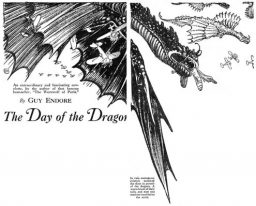 been on a seesaw. At one time it is considered to be worthy of the word “literature” and then suddenly it is not. The seesaw falls and it is called “trash”, “sub-literary” or worst of all “Pulp”. A good example of this is Guy Endore’s “The Day of the Dragon” from Blue Book, June 1934.
been on a seesaw. At one time it is considered to be worthy of the word “literature” and then suddenly it is not. The seesaw falls and it is called “trash”, “sub-literary” or worst of all “Pulp”. A good example of this is Guy Endore’s “The Day of the Dragon” from Blue Book, June 1934.
Horror (Tellers of Weird Tales): Weird Tales #367, from 2023, is a themed issue. The theme is cosmic horror. I’m not sure that a themed issue is a good idea. What happens if you as a reader don’t like the theme? Well, you go elsewhere for your reading, and your money follows you. That was one of the really good things about the original Weird Tales: no matter what your tastes were when it came to weird fiction, fantasy, or even science fiction, you would probably find something you liked in every issue.
Games (Wertzone): Five years ago, Piranha Games released MechWarrior 5: Mercenaries, a freeform game where you gained command of a detachment of BattleMechs (big stompy robots) and a starship, and guided them to fame and fortune through a mixture of procedurally-generated missions, handcrafted jobs and a lengthy story campaign.
Mercenaries, a freeform game where you gained command of a detachment of BattleMechs (big stompy robots) and a starship, and guided them to fame and fortune through a mixture of procedurally-generated missions, handcrafted jobs and a lengthy story campaign.
Fiction (Paperback Warrior): Author Charlotte Perkins Gilman (1860-1935) mostly concentrated on writing non-fiction, magazine articles, poetry, and social theory. Her most famous work is a short story titled “The Yellow Wallpaper”, originally published in The New England Magazine in 1892.
Artists (JDA Talks Comics): Jim Steranko did great work for Nick Fury and the Agents of S.H.I.E.L.D. for Marvel Comics, and he’s based too!
Fantasy (Grognardia): Long time readers of this blog will know that I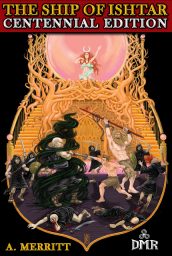 consider Abraham Merritt a foundational author in the creation of the genre we now call “fantasy” – an opinion shared by none other than Gary Gygax, who listed him among the authors of Appendix N. In the past, I’ve called Merritt fantasy’s “forgotten father.
consider Abraham Merritt a foundational author in the creation of the genre we now call “fantasy” – an opinion shared by none other than Gary Gygax, who listed him among the authors of Appendix N. In the past, I’ve called Merritt fantasy’s “forgotten father.
Publishing (Echo Chamberlain): Women dominate all aspects of fiction – and that isn’t good for fiction. Join this channel with a membership to keep it thriving:
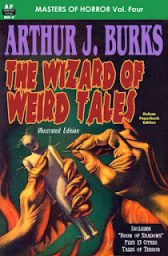 Weird Tales (Vintage Pop Fiction): The Wizard of Weird Tales is a collection of short stories by Arthur J. Burks that were originally published in the Weird Tales pulp magazine. Arthur J. Burks (1898-1974) wrote for pulp magazines in various genres and later began writing on paranormal subjects.
Weird Tales (Vintage Pop Fiction): The Wizard of Weird Tales is a collection of short stories by Arthur J. Burks that were originally published in the Weird Tales pulp magazine. Arthur J. Burks (1898-1974) wrote for pulp magazines in various genres and later began writing on paranormal subjects.
Fantasy (Tale Foundry): Fantasy used to be so much weirder. What happened?
Western (Fifties Western): There are plenty of folks out there who bestow upon The Searchers (1956) the status of The Greatest Film Ever Made. I’m one of those — even though there are plenty of movies I like better. The current DVDs and Blu-Rays of the picture are only passable. So I’m really excited about Warner Archive’s upcoming Blu-Ray/4K combo, coming in December.
upon The Searchers (1956) the status of The Greatest Film Ever Made. I’m one of those — even though there are plenty of movies I like better. The current DVDs and Blu-Rays of the picture are only passable. So I’m really excited about Warner Archive’s upcoming Blu-Ray/4K combo, coming in December.
Fantasy (Ken Lizzi): A. Merritt‘s Dwellers in the Mirage is a farrago of elements, blending almost perfectly in a heroic fantasy adventure. I wonder, though, if some of the elements are intended to be taken seriously, or if some were included simply because Merritt was having fun, seeing what he could get away with. I mean we’ve got an octopoid malevolent god from beyond the stars (or another dimension, or something) by the name of Khalk’ru.
Art (Art of the Movies): It was with great sadness that we learned last week of the passing of Greg Hildebrandt. Born a twin on 23rd January 1939, Greg would spend the larger part of his career working closely with his brother Tim (1939-2006).
Streaming (Kairos): Over the past decade, streaming services like Netflix, Hulu, and Disney+ changed the way people consume media. TV viewers flocked to streaming’s promise of liberation from rigid programming schedules and endless entertainment on demand. Yet today, the same platforms that once dominated the media landscape are facing a crisis.
Fiction (Vintage Pop Fictions): Nomads of Gor, published in 1969, is the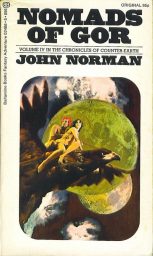 fourth book in John Norman’s Gor series. This series has aroused lots of controversy due to the fact that it depicts a society in which female slavery is practised. In fact there’s nothing controversial in the first three books. They’re imaginative and intelligent science fiction/fantasy novels with some fine world-building.
fourth book in John Norman’s Gor series. This series has aroused lots of controversy due to the fact that it depicts a society in which female slavery is practised. In fact there’s nothing controversial in the first three books. They’re imaginative and intelligent science fiction/fantasy novels with some fine world-building.
 Art (DMR Books): The birthday of the mighty Jim Steranko has rolled around again. A living legend of pop culture, I’ve written previously about Mr. Steranko here and here. Tonight, I’m gonna look specifically at Jim’s awesome legacy of Sword-and-Sorcery/S&S-adjacent art.
Art (DMR Books): The birthday of the mighty Jim Steranko has rolled around again. A living legend of pop culture, I’ve written previously about Mr. Steranko here and here. Tonight, I’m gonna look specifically at Jim’s awesome legacy of Sword-and-Sorcery/S&S-adjacent art.
Authors (A Shiver in the Archives): Lord Dunsany visited the United States five times, the final three times in the 1950s when he went to California. There he stayed with friends, including Hazel Littlefield Smith, who lived in Palos Verdes Estates, a coastal town established in 1923 as a planned community to the south and west of Los Angeles.
Pulp (Rough Edges): Edmond Hamilton continues to be one of my favorite authors of the sort of action-packed adventure science fiction I really enjoy. This novella originally appeared in the December 1942 issue of AMAZING STORIES. There’s a free e-book edition available on Amazon, which is where I read it.
Artists (Fred’s HM Fan Blog): Greg Hildebrandt has passed away. One of the famous Brothers Hildebrandt, well known and respected artists over decades-long careers. Scifi Art had a nice feature of a handful of art pieces by them.
Art (Nocloo): Virgil Finlay (July 23, 1914 – January 18, 1971) was an American pulp fantasy, science fiction and horror illustrator. He has been called “part of the pulp magazine history … one of the foremost contributors of original and imaginative art work for the most memorable science fiction and fantasy publications of our time.”
Robert E. Howard (Dark Worlds Quarterly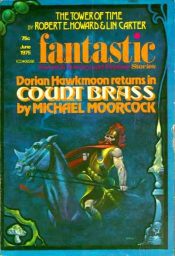 ): Reading Harvey K. Schreiber’s “Death From the Sea” got me reading other old issues of Fantastic where I found this story. “The Tower of Time” (Fantastic, June 1975) is a Robert E. Howard fragment finished by Lin Carter. This story was reportedly three-fifths finished when Howard set it aside.
): Reading Harvey K. Schreiber’s “Death From the Sea” got me reading other old issues of Fantastic where I found this story. “The Tower of Time” (Fantastic, June 1975) is a Robert E. Howard fragment finished by Lin Carter. This story was reportedly three-fifths finished when Howard set it aside.
 Fiction (Jon Black Writes): The public aspects of Conover’s enthusiasm for science fiction and fantasy faded after a couple of years, excluding a secondary period of activity in the 1970s, as his focus turned toward his meritorious service to jazz. He never, however, ceased his correspondence or collecting.
Fiction (Jon Black Writes): The public aspects of Conover’s enthusiasm for science fiction and fantasy faded after a couple of years, excluding a secondary period of activity in the 1970s, as his focus turned toward his meritorious service to jazz. He never, however, ceased his correspondence or collecting.
Fiction (Paperback Warrior): It would be difficult to discuss zombie novels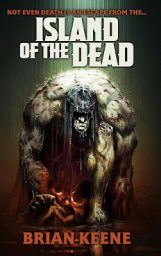 without including a cornerstone of the genre, Brian Keene. Many consider his novel The Rising (2003), along with Robert Kirkman’s The Walking Dead, as catalysts for zombie pop-culture of the 2000s. Keene’s novel spawned a sequel, City of the Walking Dead, and two additional entries that live in the very undead world of The Rising.
without including a cornerstone of the genre, Brian Keene. Many consider his novel The Rising (2003), along with Robert Kirkman’s The Walking Dead, as catalysts for zombie pop-culture of the 2000s. Keene’s novel spawned a sequel, City of the Walking Dead, and two additional entries that live in the very undead world of The Rising.
H. P. Lovecraft (Old Style Tales): By comparison, Howard was a high school dropout, had never been conventionally employed, lived in the same city for almost his entire life (save for a miserable, two-year stint as an unemployed house-husband), was divorced after two years of awkward cohabitation, and was too obscure to make any significant artistic waves during his lifetime.[3
Fiction (Dark Worlds Quarterly): The author I am writing about today: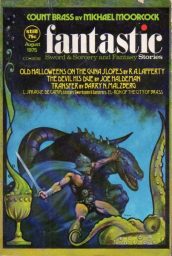 Harvey Keith Schreiber. I know so little about HKS that even finding his middle name is a feat. (Thanks ISFDB.) Schreiber appeared only once with “Death From the Sea” (Fantastic, August 1975) and then nothing more until 1979.
Harvey Keith Schreiber. I know so little about HKS that even finding his middle name is a feat. (Thanks ISFDB.) Schreiber appeared only once with “Death From the Sea” (Fantastic, August 1975) and then nothing more until 1979.
H. P. Lovecraft (Miskatonic Debating Club): Throughout the Mythos literature we encounter rocks, carved with strange symbols and pregnant with subtle power or dangerous potency. Some of these are cult objects; others are artefacts of hidden lore. Mostly, they are hazardous to one’s health. In our subjective “real world” there are similar stones, not always dark in a metaphoric sense, which have obviously served as the foundations for literary horrors: the following list throws them all into the mix as inspiration.
Radio (Old Time Radio Researchers Group): INNER SANCTUM MYSTERIES The anthology series featured stories of mystery, terror and suspense, and its tongue-in-cheek introductions were in sharp contrast to shows like Suspense and The Whistler. The early 1940s programs opened with Raymond Edward Johnson introducing himself as, “Your host, Raymond,” in a mocking sardonic voice.
RPG (R’lyeh Reviews): No Time to Scream: Three Evenings of Terror is the sequel. It is again designed to be used with either the Call of Cthulhu, Seventh Edition full rules or the Call of Cthulhu Starter Set, and again, it contains three scenarios. However, each is more expansive and plays out in a larger area than the single locations to be found in the scenarios for Gateways to Terror.
again designed to be used with either the Call of Cthulhu, Seventh Edition full rules or the Call of Cthulhu Starter Set, and again, it contains three scenarios. However, each is more expansive and plays out in a larger area than the single locations to be found in the scenarios for Gateways to Terror.
 Pulp (Black Gate): It’s a new shelfie and we’re up to number eleven. And this one is my Dashiell Hammett collection. His face is the first one on my Hardboiled Mt. Rushmore. So, he’s got a solid shelf in my Hardboiled collection.
Pulp (Black Gate): It’s a new shelfie and we’re up to number eleven. And this one is my Dashiell Hammett collection. His face is the first one on my Hardboiled Mt. Rushmore. So, he’s got a solid shelf in my Hardboiled collection.
Fiction (Tentaclii): I see that Archive.org has the short novel The Greatest Adventure (February 1929, as reprinted in Famous Fantastic Mysteries for June 1944). The plot (below) has some resemblance to Lovecraft’s At The Mountains of Madness.
Cinema (Fantasy Literature): Although I was born a little too late to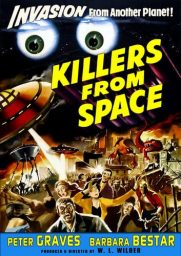 experience the Golden Age of the cinematic double feature – that is to say, the 1940s and ‘50s – I have been able to enjoy the next-best thing, thanks to where I happen to live. Back in the 1970s and ‘80s, NYC boasted well over a dozen so-called “revival theaters” that showed the classic old movies, usually in double-feature format. Most of those theaters are no more, and the ones that remain today, sadly enough, no longer show two films paired together for a single ticket price.
experience the Golden Age of the cinematic double feature – that is to say, the 1940s and ‘50s – I have been able to enjoy the next-best thing, thanks to where I happen to live. Back in the 1970s and ‘80s, NYC boasted well over a dozen so-called “revival theaters” that showed the classic old movies, usually in double-feature format. Most of those theaters are no more, and the ones that remain today, sadly enough, no longer show two films paired together for a single ticket price.
Fiction (Bloody Spicy Books): Then, up there high on the peak of my adventure fiction mountain is The Death of The Fuhrer. It’s one of those “infamous” type of books. Bill Pronzini mentioned it in his Gun in Cheek book about “questionable” fiction. Paperback haunts like Johnny LaRue’s Crane Shot and Glorious Trash have told tale of the wonders of the book and spread its laurels through the fans of Men’s Adventure field.
Men’s Mags (Pulp Fiction Reviews): The heart of this thread has been Pulp Fiction from its earliest iterations. Thriving in the 1930s and 40s, its rough paper format died out after World War II to be replaced by cheap paperbacks and Men’s Adventure Magazines, or MAMs.
Paleontology (IFL Science): A newly discovered leg bone from Columbia is likely to be from the largest member of the Phorusrhacid family – appropriately known as “terror birds” – we have yet found, and could have stood more than 3 meters tall. The team describing the fossil thinks the individual it came from was 5-20 percent larger than the previous record-holder.
from the largest member of the Phorusrhacid family – appropriately known as “terror birds” – we have yet found, and could have stood more than 3 meters tall. The team describing the fossil thinks the individual it came from was 5-20 percent larger than the previous record-holder.
History (Dan Davis History): Rodrigo Díaz de Vivar known as El Cid is called the greatest knight in history and master of the battlefield. He became icon not only for his feats of arms but also his many virtues. Widely regarded as the ideal medieval knight, he was strong and brave in battle, and just and pious in peace. He was respected by his enemies and loved by the loyal knights who flocked to his banner.
That “Day of the Dragon” illo by John Clymer is cool! It kind of anticipates Frazetta’s fell beast in his LotR portfolio.
That’s a fine review of Merritt’s DWELLERS IN THE MIRAGE.
Very cool link on El Cid. For various reasons, his badassedness is little known to Anglophone fans of badass knights. Deus Vult!